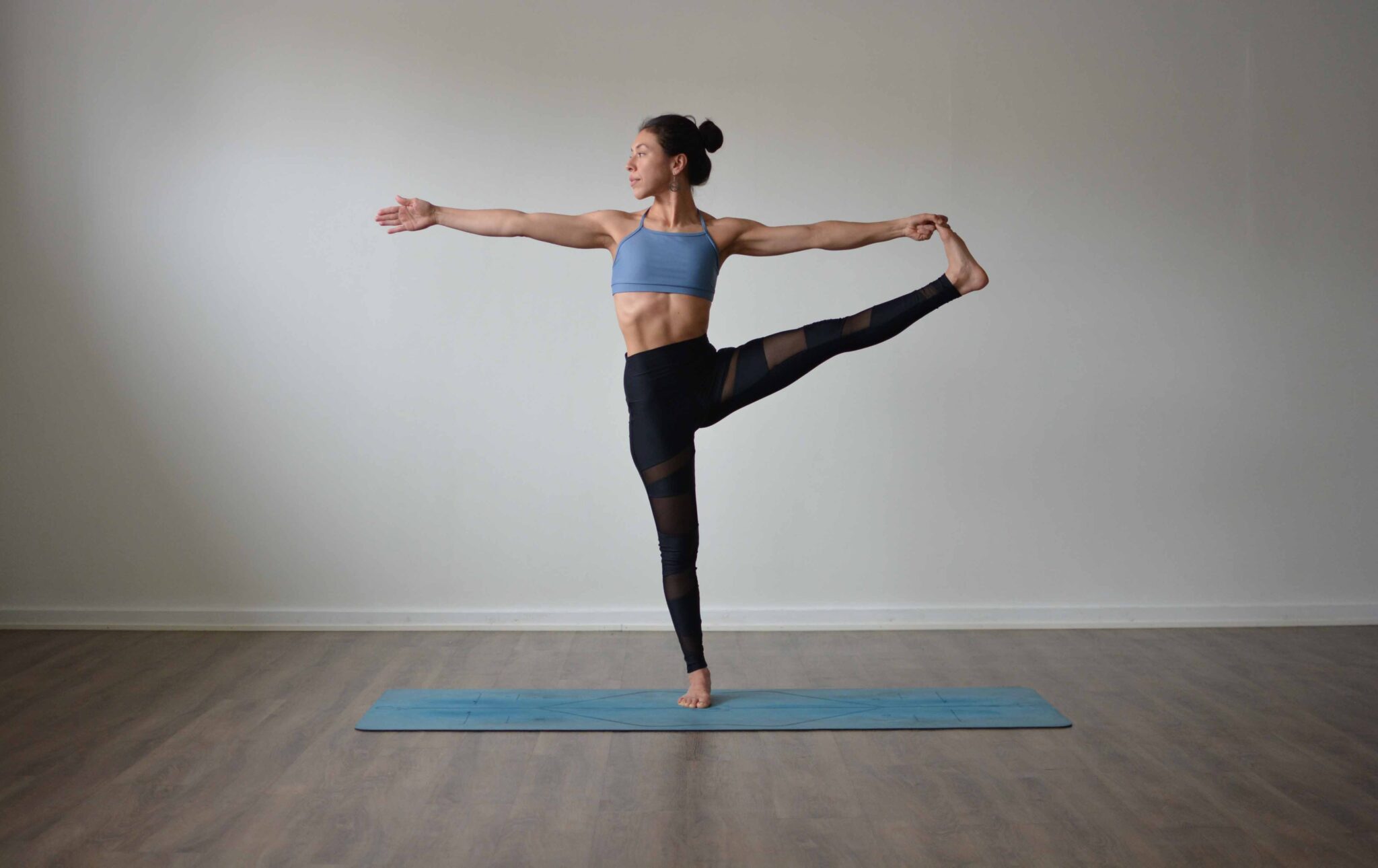
2 Apr 2023 HYN Himalayan Yoga Academy
Utthita Hasta Padangusthasana is a standing posture that fosters equilibrium, balance, and increased focus. The word is a combination of the Sanskrit words utthita, which means “standing,” hasta, which means “hand,” padangustha, which means “big toe,” and asana, which means “pose”. It is known as the Extended Hand To Big Toe Pose.
How to do Utthita hasta padangusthasana-A:
- Stand straight and tall in samasthiti.
- Inhale and lift your right leg, and grab your right big toe with your right hand while keeping your left hand on your left waist.
- Exhale and pull your leg closer to your chin and slightly fold forward towards your leg.
- Gaze fix to the big toe. Hold the pose for about five deep breaths.
How to do Utthita hasta padangusthasana- B:
- From Utthita hasta padangusthasana- A, inhale and release your forward fold. Continue holding your big toe and keep your body straight
- Exhale and slowly move your right leg towards the right side while holding your big toe with your right hand. Turn your head to the left side. Gaze fix far to the left.
- Hold the pose for about 5 deep breaths.
How to do Utthita hasta padangusthasana- C:
From Utthita hasta padangusthasana- B, bring your leg back to the front and pull your right in front with both hands. This is done only for one breath according to the Ashtsnga Vinyasa Series. Yet, if you want you can increase its duration up to five deep breaths.
How to do Utthita hasta padangusthasana- D:
- From Utthita hasta padangusthasana-C, inhale, release your both hands and keep them on your waist.
- Keep your leg extended forward parallel to the floor.
- Hold the pose for about five deep breaths, gaze fixed on the big toe, and release.
- Repeat the same process on the other side as well.
Benefits of Utthita hasta padangusthasana:
- Utthita hasta padangusthasana boosts the strength of your leg.
- It enhances a person’s feeling of balance, both physically and mentally.
- It boosts mental focus during meditation, harmonizes feelings, encourages mental steadiness, and heightens self-awareness.
- In addition to strengthening the core and opening the heart, this posture aids in maintaining a sense of calm and equilibrium that is always present.
- It helps to balance the left and right hemispheres of the brain.
- If you do this pose regularly, it works for anti-aging.
- Utthita hasta padangusthasana stimulates the Muladhara (root) and svadisthana (spleen or sacrum) chakras. A person’s feeling of stability, openness to intimacy, creativity, and sense of self are all strengthened when these two chakras are stimulated.
- Stretches and opens the hips, shoulders, and arms while strengthening the legs, ankles, and muscles around the knees.
- It also thoroughly stretches the hamstrings or back thigh muscles.
- Improved digestion and lower back pain relief are both benefits of this practice.
Modifications :
- Beginners who need modifications can use a strap to hold on to the foot, maintain the leg bent, and open the hip to the side. As soon as one is balanced enough to turn to the side, one can also keep looking forward.
- Another adjustment is to bend your knee and hold on to the top of your shin, which is near your knee, rather than your big toe.
- If your balance is not proper, practice it next to a wall or pillar. As and when necessary, take support of it.
Contra-indication for Utthita Hasta Padangusthasana
You should never perform Padangusthasana if you have any of the following medical problems without first speaking to a qualified yoga instructor or ayurvedic physician:
- Pregnant women later than four months.
- Knee pain or Arthritis
- Recent surgery in the neck, abdomen, or knees.
- Chronic diarrhea
- Injury in the back, quadriceps, or hamstrings.
- Persistent headaches or migraine.
Who should not miss Utthita Hasta Padangusthasana?
Padangusthasana can be readily altered to accommodate various fitness goals, ages, and health conditions.
This asana is good for all but very important for:
- Children
- Seniors
- Those who have issues with their kidneys and stomach.
- People who wish to lessen their anxiety and tension.
- People who suffer from lower back pain.
- Those who often experience stomach issues.
- People who experience occasional light headaches.
Remember:
Deep breath during an asana is very important to gain strength to hold the pose for a longer duration and maintain stability and balance. It is better to observe a deep breath from nostrils to tandem (area 2 inches below your navel) and tandem to nostrils. This practice will continue to recharge your body.
